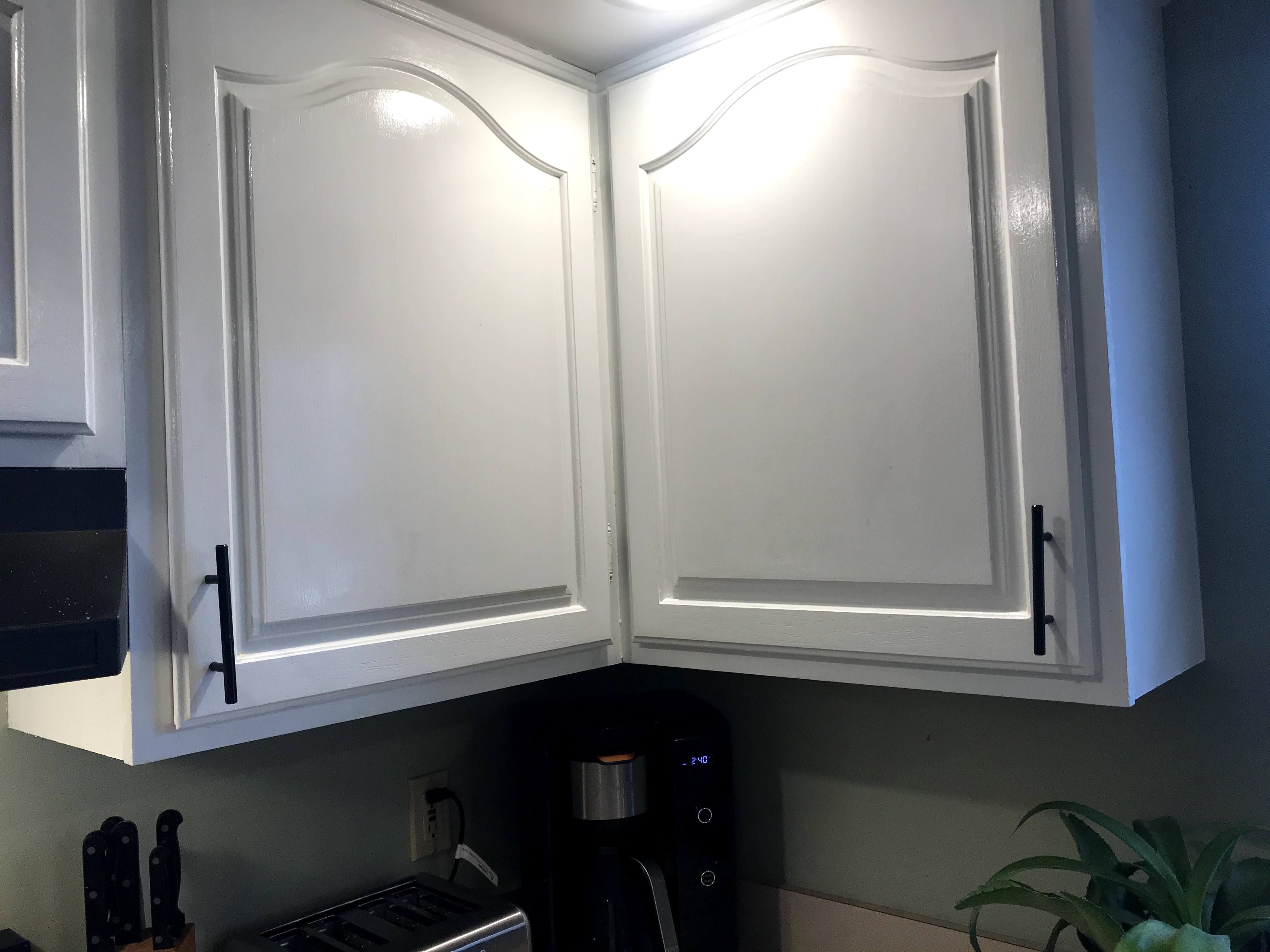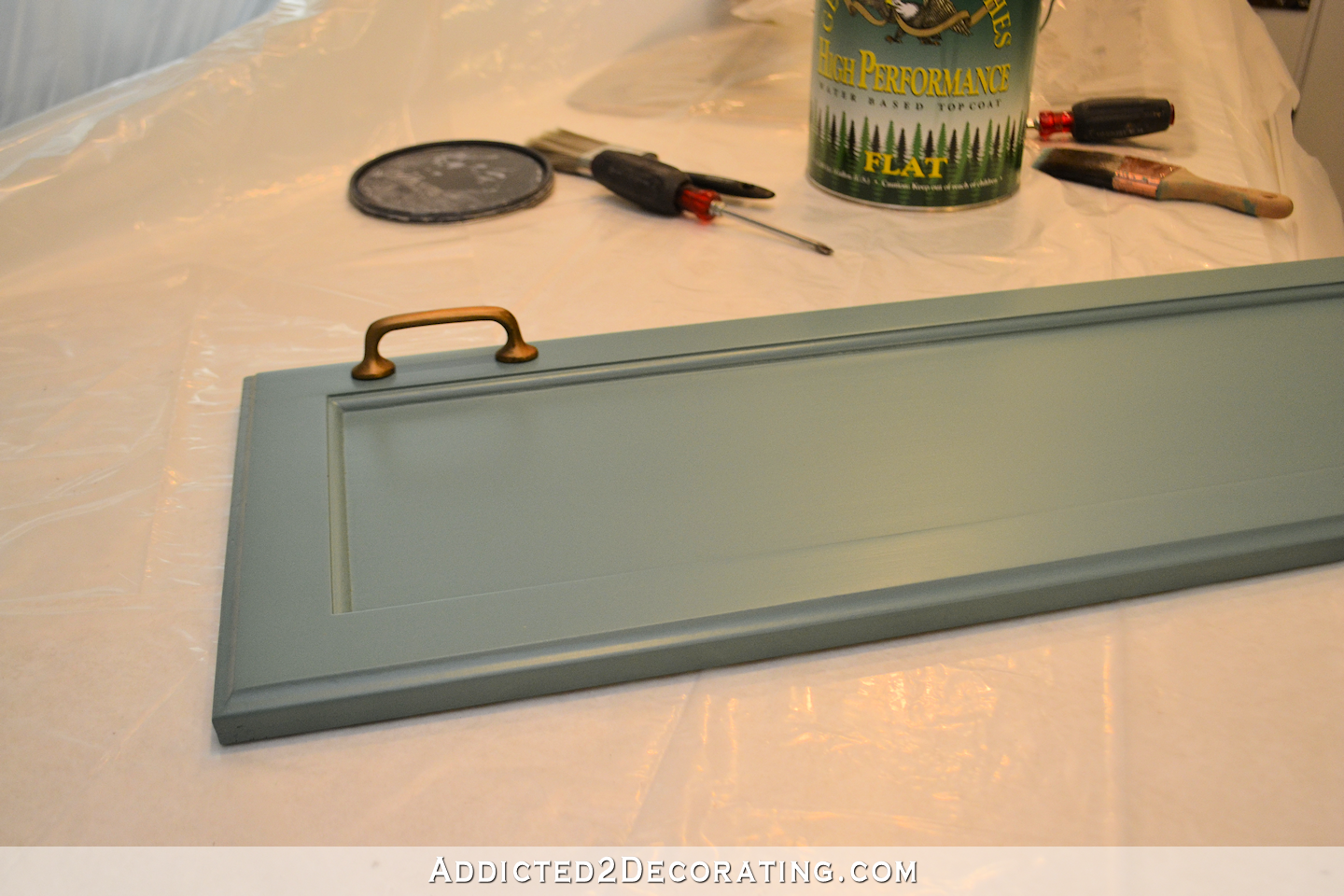Preparing Cabinets for Polyurethane Paint

Proper preparation is paramount when painting polyurethane cabinets. A flawlessly smooth and durable finish depends entirely on meticulous cleaning, sanding, and priming. Skipping steps will result in a subpar paint job, leading to peeling, chipping, and an overall unprofessional appearance. This section details the essential steps for preparing your cabinets for a successful polyurethane paint application.
Cabinet Surface Preparation
Thorough cleaning and preparation are crucial before painting. Failure to properly clean and sand the surface will lead to poor adhesion of the primer and paint, resulting in a less durable and aesthetically pleasing finish. The following table Artikels the necessary steps:
| Step | Material | Function | Notes |
|---|---|---|---|
| 1. Cleaning | TSP (trisodium phosphate) solution, warm water, rags, scrubbing brush | Removes grease, dirt, and old wax build-up | Wear gloves and eye protection. Rinse thoroughly with clean water. |
| 2. Sanding (Existing Finish Removal) | Sandpaper (various grits, starting with 80-100 grit, progressing to 220 grit), sanding block, dust mask, safety glasses | Removes existing finish, smooths the surface | Start with coarser grit sandpaper and gradually move to finer grits for a smooth surface. Use a sanding block for even pressure. |
| 3. Sanding (After Primer) | Sandpaper (220-320 grit), sanding block, dust mask, safety glasses | Smooths the primed surface for a flawless finish | Light sanding is key to avoid removing too much primer. Remove dust thoroughly. |
| 4. Priming | High-quality bonding primer, paint roller, paintbrush, drop cloths | Provides a uniform surface for paint adhesion, seals the wood, and blocks stains | Apply thin, even coats, allowing adequate drying time between coats as specified by the manufacturer. |
Removing Existing Finishes
Removing existing finishes from polyurethane cabinets requires patience and the right tools. This step ensures optimal adhesion of the new paint. Improper removal can lead to a bumpy, uneven surface and paint failure. The process typically involves several stages of sanding. For heavily textured or heavily damaged finishes, a chemical stripper might be necessary, followed by thorough cleaning and neutralization. Always follow the manufacturer’s instructions for any chemical strippers used. Always wear appropriate safety gear, including gloves, eye protection, and a respirator.
Choosing and Applying Polyurethane Paint: Can You Paint Polyurethane Cabinets

Selecting and applying polyurethane paint correctly is crucial for achieving a durable and aesthetically pleasing finish on your kitchen cabinets. The type of polyurethane paint you choose, along with your application technique, will significantly impact the final look and longevity of your project. Careful consideration of both factors is essential for a successful outcome.
Polyurethane Paint Types: Oil-Based vs. Water-Based
The choice between oil-based and water-based polyurethane paints depends largely on your priorities and working conditions. Both offer distinct advantages and disadvantages.
- Oil-Based Polyurethane: Offers superior durability and a harder, more resistant finish. It provides excellent protection against scratches and moisture, making it ideal for high-traffic areas like kitchens. However, oil-based polyurethane has a strong odor, requires longer drying times, and necessitates the use of solvents for cleanup, adding to the complexity of the process.
- Water-Based Polyurethane: Is significantly easier to clean up, using only soap and water. It also dries much faster and has a lower odor, making it a more user-friendly option for homeowners. While less durable than oil-based polyurethane, water-based options still offer excellent protection and a smooth finish, especially with multiple coats. However, it may not be as resistant to scratches and moisture as its oil-based counterpart.
Best Practices for Applying Polyurethane Paint
Achieving a smooth, even finish free of brush strokes requires careful preparation and application techniques. Thorough preparation of the cabinet surfaces, as previously discussed, is paramount. Using high-quality brushes and rollers is also crucial.
Applying thin, even coats is key to preventing runs and drips. Multiple thin coats will yield a smoother, more durable finish than one thick coat. Allow each coat to dry completely according to the manufacturer’s instructions before applying the next. Light sanding between coats with fine-grit sandpaper (220-grit or higher) will help to smooth out any imperfections and ensure a flawless final result. This sanding step also improves adhesion between coats.
Visual Guide to Proper Brush and Roller Technique
Imagine a paintbrush as an extension of your arm. The handle should rest comfortably in your hand, allowing for controlled and fluid movements. For brushing, use long, smooth strokes in the direction of the wood grain. Avoid dabbing or applying too much pressure. Overlapping each stroke slightly ensures even coverage and prevents visible brush marks. Maintain a consistent angle to keep the paint flow consistent.
Visualize using a roller with a smooth, even motion. Load the roller with enough paint to cover a small section, but avoid overloading. Apply paint using a smooth, consistent back-and-forth motion, slightly overlapping each pass. Keep the roller at a consistent angle and pressure to ensure even paint distribution. Work in small sections to maintain control and prevent uneven application. Avoid excessive pressure, which can lead to roller marks. Using an extension pole can help reach higher areas with better control.
Troubleshooting and Finishing Touches

Painting polyurethane cabinets can yield stunning results, but imperfections can arise. Addressing these issues promptly is key to achieving a professional-looking finish. Understanding the common problems and their solutions will significantly improve your chances of success. This section focuses on identifying and resolving typical painting challenges and ensuring a durable, long-lasting finish.
Common Painting Problems and Solutions, Can you paint polyurethane cabinets
Careful preparation and application are vital, but even the most meticulous painter can encounter problems. The following table Artikels common issues and their solutions:
| Problem | Solution |
|---|---|
| Drips and Runs | Use a high-quality polyurethane paint formulated for a smooth, self-leveling finish. Apply thin, even coats, allowing each coat to dry completely before applying the next. If drips occur, gently smooth them out with a slightly damp brush or a clean, soft cloth *before* the paint dries. |
| Uneven Coverage | Ensure the surface is properly prepared (cleaned, sanded, and primed). Use a high-quality brush or roller designed for smooth finishes. Apply multiple thin coats, allowing each coat to dry completely before applying the next. Consider using a sprayer for a more even application, especially on large cabinet surfaces. |
| Bubbling | Bubbling often indicates that the surface wasn’t completely dry or clean before painting. Ensure the cabinets are thoroughly cleaned and completely dry before applying paint. Avoid painting in humid conditions or when the temperature is too high. If bubbles appear, carefully pop them with a pin and smooth the area with a damp brush. Lightly sand the affected area after it dries before applying another thin coat. |
| Brush Strokes | Use a high-quality brush with soft bristles, applying thin, even coats. Work in the same direction to minimize visible brush strokes. Consider using a foam roller for a smoother finish. Light sanding between coats can help to eliminate brush marks. |
| Dust Nibs | Dust nibs are small imperfections caused by dust settling on the wet paint. Work in a clean, dust-free environment. Consider using a tack cloth to remove dust particles before painting and between coats. |
Drying and Curing Time
Proper drying and curing are crucial for a durable and long-lasting finish. Polyurethane paint requires adequate time to dry and cure completely. Rushing this process can lead to a weak, easily scratched, and less durable finish. The manufacturer’s instructions should always be followed for specific drying and curing times, which vary depending on the paint type, environmental conditions (temperature and humidity), and the thickness of the applied coats. For example, a thick coat applied in a humid environment will take considerably longer to dry and cure than a thin coat applied in a warm, dry environment. Insufficient drying time can lead to sticking, bubbling, and a compromised final finish. Complete curing may take several days or even weeks to achieve optimal hardness and durability.
